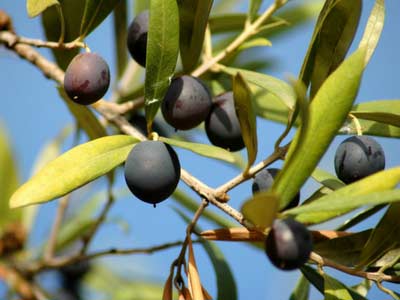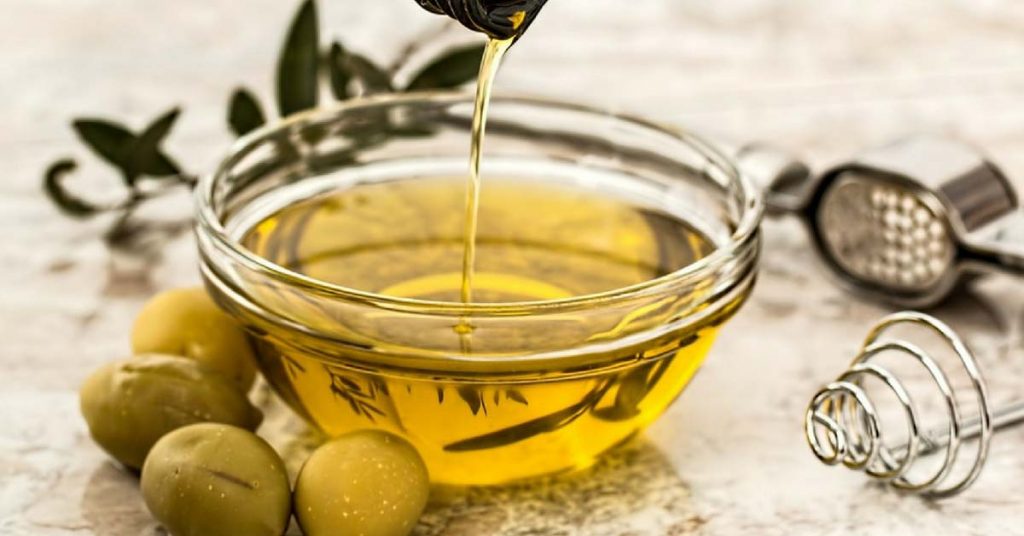 The growing popularity of olive oil is an exciting development here in Napa Valley as California – along with Australia and South Africa – are emerging leaders in the olive oil industry. The popular Mediterranean diet – touted for its health benefits – uses olive oil as the main dietary fat and has perhaps led to this resurgence. I do want to tell you, however, that after drinking a half a cup of olive oil as part of a cleanse I was doing recently, I looked up how many calories I had just consumed and about fell over when I saw there are 1,910 calories in a cup of olive oil.
The growing popularity of olive oil is an exciting development here in Napa Valley as California – along with Australia and South Africa – are emerging leaders in the olive oil industry. The popular Mediterranean diet – touted for its health benefits – uses olive oil as the main dietary fat and has perhaps led to this resurgence. I do want to tell you, however, that after drinking a half a cup of olive oil as part of a cleanse I was doing recently, I looked up how many calories I had just consumed and about fell over when I saw there are 1,910 calories in a cup of olive oil.
Having said that, reverence for the olive tree dates back to ancient times. Archaeological evidence shows olive trees existed in 3500 B.C. on the island of Crete. Oil from olives was often used to anoint a body during religious ceremonies. In the Bible, Noah receives a message from a dove with an olive branch in its mouth.
The olive tree is a member of the evergreen family and features a gnarled trunk and leaves with a silvery underside. The trees thrive best in regions with rainy winters and hot, dry summers. A single tree can live for centuries, but it may take up to eight years to produce its first harvest.
Here are some facts you may find interesting:
- One quart (0.95 L) of extra virgin olive oil, the highest level of quality, requires 2,000 olives.
- A mature olive tree can produce 20 to 80 pounds of olives, depending on the tree size, variety, weather and other factors.
- An olive tree typically costs $6 and up – depending on size and variety. About 150 to 300 olive trees can be planted per acre, which will cost $500 to $2,000 per year to maintain per acre.
- The cost to harvest per ton can range from $300 to $700. Milling costs vary widely depending on what method you choose. A small commercial olive mill – which can mill 350 to 500 pounds an hour – costs about $60,000, plus an additional $30,000 to $50,000 for the peripheral equipment (scale, tanks, etc.).
- The average cost of milling at a public facility is $300 to $450 per ton.
The “Olive Oil Source” website is a great resource for how to make good quality olive oil. Below are some important guidelines to follow in the olive oil-making process:
 Treat the Olive as a fruit – because it is.
Treat the Olive as a fruit – because it is.
The ripe fruit is actually quite delicate and requires protection from pressure, temperature, and abrasion. When the fruit breaks down, fermentation begins – ultimately leading to defective oils. To maintain the integrity of the fruit, limit the depth of containers to reduce pressure. Take all necessary precautions to protect against disease and pests. Fruit attacked by a pest will begin to decay.- Separate by Fruit Classes
Different fruit qualities will produce different qualities of oil. Olive fruit should be separated by ground and tree fruit, as well as by variety, fruit condition, ripeness, or other sanitary condition. Priority should be given to the best fruit. Keep tree fruit separate from ground fruit, which is considered a second-class fruit. - Process Quickly at the Right Temperature
Quality oil cannot be produced with prolonged storage or slow working of the fruit. This can lead to oxidation and fermentation and, ultimately, defects and poor flavoring. Hand-picked fruit processed at temperatures below 86 degrees Fahrenheit produces quality oil. This also helps protect the aromas and guards against oxidation. - Prune Carefully and Sparingly
When it comes to olive trees, less pruning is better. Not all trees require a yearly pruning, and if it can be delayed until the following year then do so. Pruning should be based on the age of the tree. Always proceed from top to bottom, and large cuts should be made before small ones. The main goal is to correct differences in vigor between branches. Try to keep pruning rapid and simple. - Store with Care
The proper aging and conservation of desirable flavor are dependent on good storage practices. Store oil in clean stainless steel at temperatures below 65 degrees Fahrenheit. Dark glass bottles are preferable to clear bottles. - Provide Supplemental Irrigation
Olive trees are drought tolerant.Although this may seem like good news for California, supplemental irrigation is highly recommended to get the trees through the growing season. The minimum amount of irrigation water needed for good production in California is about 7,000 gallons per acre per day or a continuous 5 gallons per minute. The peak period for providing adequate water for olive trees is June through September. - Become an Expert
Obviously, there’s a lot to consider before you can begin to produce quality olive oil. Learn everything you can about the production and harvest process.Familiarize yourself with the sensory evaluation of olive oil, so that you may recognize any major defects.
Know More About Napa Valley Olive Oil
If you want to know more about Napa Valley olive oil, Napa real estate, and wineries, get in touch with me. I would be delighted to help you find your dream wine country property. You can reach me at 707-738-4820 or [email protected].




